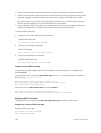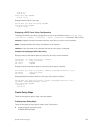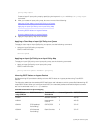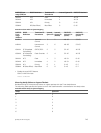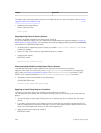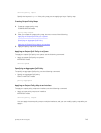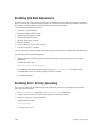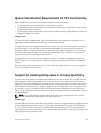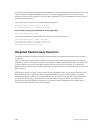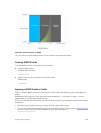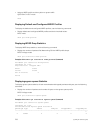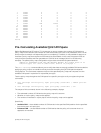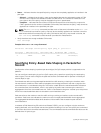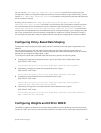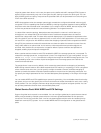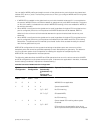
In switch B, global dot1p honoring should be enabled, this will queue the packets on queue 1 as the dot1p
will be 2 and PFC should be enabled for priority 2. The policy map applied on switch A need not be
enabled in switch B. When queue 1 in switch B gets congested, PFC will be generated for priority 2 which
will be honored in switch A.
You will not get the below CLI errors after adding this support:
Dell(conf)#qos-policy-input qos-input
Dell(conf-qos-policy-in)#set mac-dot1p 5
% Error: Dot1p marking is not allowed on L3 Input Qos Policy.
Dell(conf-qos-policy-in)#
You will also be able to mark both DSCP and Dot1p in the L3 Input Qos Policy:
Dell(conf)#qos-policy-input qos-input
Dell(conf-qos-policy-in)#set mac-dot1p 2
Dell(conf-qos-policy-in)#set ip-dscp 5
Dell Dell(conf-qos-policy-in)#
Weighted Random Early Detection
The WRED congestion avoidance mechanism drops packets to prevent buffering resources from being
consumed.
Traffic is a mixture of various kinds of packets. The rate at which some types of packets arrive might be
greater than others. In this case, the space on the buffer and traffic manager (BTM) (ingress or egress) can
be consumed by only one or a few types of traffic, leaving no space for other types. You can apply a
WRED profile to a policy-map so that specified traffic can be prevented from consuming too much of the
BTM resources.
WRED uses a profile to specify minimum and maximum threshold values. The minimum threshold is the
allotted buffer space for specified traffic, for example, 1000KB on egress. If the 1000KB is consumed,
packets are dropped randomly at an exponential rate until the maximum threshold is reached (as shown
in the following illustration); this procedure is the “early detection” part of WRED. If the maximum
threshold, for example, 2000KB, is reached, all incoming packets are dropped until the buffer space
consumes less than 2000KB of the specified traffic.
748
Quality of Service (QoS)



